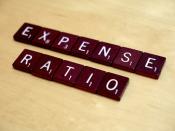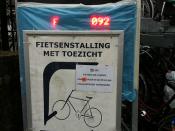Allocation of expenses based on traditional methods.
Total advertising expense = $ 5 M50% allocated to unicycles = 0.5*5 = $ 2.5 M50% allocated to bicycles = 0.5*5 = $ 2.5 MTotal warehouse expense = $ 3 M50% allocated to unicycles = 0.5*3 = $ 1.5 M50% allocated to bicycles = 0.5*3 = $ 1.5 MRecommended allocation of expensesAdvertising expenses should be allocated on the basis of salesSales of unicycle business = $ 150 MSales of bicycle business = $ 20 MProportion of sales of unicycle business = 150/ (150 + 20) = 150/170 = 0.8824Proportion of sales of bicycle business = 20/ (150 + 20) = 20/170 = 0.1176Total advertising expense = $ 5 M88.24% allocated to unicycles = 0.8824*5 = $ 4.41 M11.76% allocated to bicycles = 0.1176*5 = $ 0.59 MWarehouse expenses should be allocated on the basis of warehouse area usedWarehouse area of unicycle business = 75,000 square feetWarehouse area of bicycle business = 25,000 square feetProportion of warehouse area of unicycle business= 75000/ (75000 + 25000) = 75000/100000 = 0.75Proportion
of warehouse area of bicycle business= 25000/ (75000 + 25000) = 25000/100000 = 0.25Total warehouse expense = $ 3 M75% allocated to unicycles = 0.75*3 = $ 2.25 M25% allocated to bicycles = 0.25*3 = $ 0.75 MToday businesses run several product lines and for making correct management decisions need to accurately determine the profitability of each product line. This is not all that straightforward because the many product lines share resources. Hence the costs of the resources have to be allocated to the product lines on the basis of usage or appropriate cost drivers. If too many expenses or too little expenses being allocated to each of the product lines then the profitability will be incorrectly determined and the decision-making will suffer.
In the...


